If you’re considering a pet that’s a bit out of the ordinary, small snakes can make wonderful companions. They are often easier to care for than traditional pets like dogs or cats, and they come in a variety of stunning colors and patterns. In this article, we’ll explore the best small snakes for pets, their care requirements, and tips for choosing the right one for you.
Small snakes are perfect for those who want an exotic pet without the need for a large enclosure or complex care. They typically require less space, and many species have manageable feeding schedules. Additionally, small snakes are often less demanding in terms of social interaction, making them ideal for busy lifestyles.
Here are some of the most popular small snake species that are commonly kept as pets:
Corn snakes (Pantherophis guttatus) are one of the most popular pet snakes due to their docile nature, attractive coloration, and manageable size. This guide will cover everything you need to know about corn snakes, including their characteristics, care requirements, feeding, and habitat.
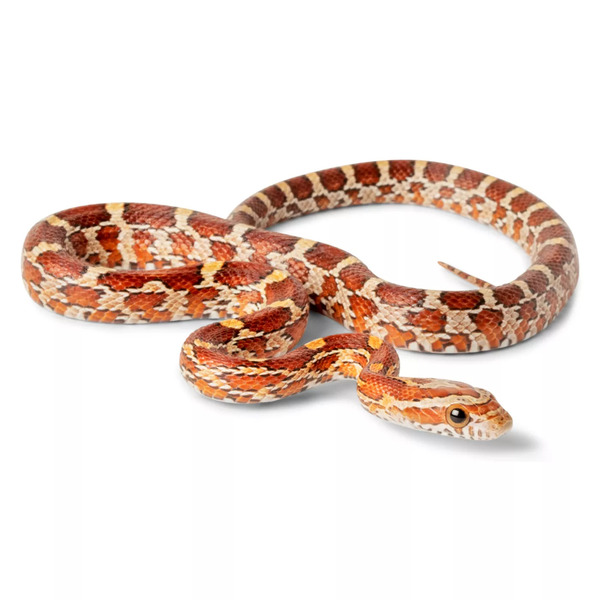
Corn snakes are known for their beautiful patterns and colors. They typically have a base color of orange or yellow with black or brown blotches running down their backs. Some morphs display variations in color and pattern, making them even more visually appealing. Adult corn snakes can range in length from 3 to 5 feet, with some individuals growing even larger.
In the wild, corn snakes are native to the southeastern United States, where they can be found in a variety of habitats, including forests, fields, and grasslands. They are primarily terrestrial but are also skilled climbers. Corn snakes often seek shelter in burrows or under rocks and logs, which helps them avoid predators.
Corn snakes are known for their calm and gentle temperament. They are generally easy to handle and rarely exhibit aggressive behavior. This makes them an excellent choice for beginners and experienced reptile owners alike. Corn snakes are also curious and will often explore their surroundings, especially when they are in a safe and comfortable environment.
Enclosure Size: A 20-gallon tank is suitable for a young corn snake, while adults require at least a 40-gallon tank. The enclosure should be secure to prevent escapes.
Substrate: Use aspen shavings, cypress mulch, or reptile carpet as bedding. Avoid cedar and pine, as these can be harmful to snakes.
Hiding Spots: Provide hiding places using commercial hides, logs, or plants. This helps reduce stress and gives your snake a sense of security.
Temperature Gradient: Corn snakes need a temperature gradient within their enclosure. The warm side should be maintained at 80-85°F, while the cool side should be around 70-75°F. This allows the snake to thermoregulate.
Heating Elements: Use an under-tank heater or heat lamp to create the temperature gradient. Make sure there are no direct heat sources that can cause burns.
Humidity: Maintain humidity levels around 30-50%. A small water dish should be provided for drinking, and it can also help with humidity.
Corn snakes do not require special lighting like some reptiles. However, a regular light cycle of 12 hours of light and 12 hours of darkness is beneficial. This mimics their natural environment and helps regulate their biological clock.
Corn snakes are non-venomous constrictors that primarily eat rodents in the wild. Here are some feeding guidelines:
Diet: Offer appropriately sized prey, such as mice or rat pups, depending on the size of the snake. The prey should be about the width of the snake’s body.
Feeding Schedule: Hatchlings should be fed every 5-7 days, while adults can be fed every 7-14 days. Always monitor your snake’s weight to determine the right feeding schedule.
Frozen vs. Live: Many owners prefer to feed frozen-thawed prey to reduce the risk of injury to the snake and to avoid ethical concerns with feeding live prey.
Handling corn snakes is essential for bonding and socialization. Here are some tips:
Frequency: Handle your corn snake regularly, but avoid handling right after feeding, as this can stress the snake.
Gentle Approach: Always approach the snake gently and support its body to prevent stress. Let the snake move around your hands and explore.
Regular health checks are important for your corn snake. Look for signs of illness, such as:
Mites or Parasites: Regularly inspect for pests, especially if the snake is scratching or rubbing against surfaces.
Respiratory Issues: Symptoms include wheezing, labored breathing, or discharge from the nose.
Shedding Problems: If your snake has difficulty shedding, it may require assistance or increased humidity
Corn snakes are excellent pets for both beginners and experienced reptile enthusiasts. Their calm demeanor, beautiful appearance, and relatively straightforward care requirements make them a top choice for anyone looking to venture into the world of snakes. By providing a proper habitat, a balanced diet, and regular handling, you can ensure that your corn snake lives a long, healthy life. Whether you are captivated by their striking colors or their gentle nature, a corn snake can be a rewarding addition to your home.
Hognose snakes are fascinating reptiles known for their unique appearance and playful behavior. Their distinctive upturned snouts and varied colors make them a favorite among reptile enthusiasts. This guide will cover everything you need to know about hognose snakes, including their characteristics, care requirements, feeding, and behavior.
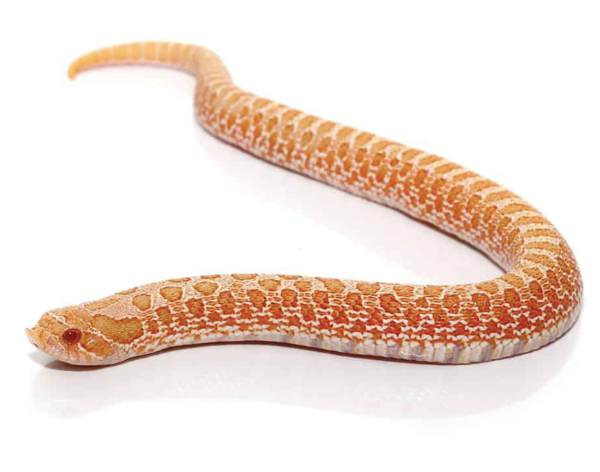
Hognose snakes (Heterodon spp.) are medium-sized snakes that typically range from 2 to 3 feet in length, although some individuals can grow slightly larger. Their most notable feature is their flattened, upturned snouts, which they use to burrow in sandy soil and to aid in their feeding habits. Hognose snakes come in various colors and patterns, including shades of brown, gray, and yellow, often with dark spots or stripes.
Hognose snakes are native to North America, primarily found in areas with loose, sandy soils such as grasslands, prairies, and scrublands. They are primarily terrestrial but are also skilled burrowers. These snakes are most active during the day, particularly in the spring and fall when temperatures are moderate.
Hognose snakes are known for their docile nature and playful behavior. They are generally friendly and tolerate handling well, making them great pets for both beginners and experienced keepers. When threatened, hognose snakes exhibit a unique defense mechanism: they may flatten their necks, hiss loudly, or even play dead by rolling onto their backs and remaining motionless.
Enclosure Size: A 20-gallon tank is suitable for a young hognose snake, while adults require at least a 30-gallon tank. The enclosure should have a secure lid to prevent escapes.
Substrate: Use aspen shavings, coconut fiber, or sand as bedding. Avoid cedar or pine, as these can be harmful to snakes.
Hiding Spots: Provide hiding places using commercial hides, logs, or plants. This helps reduce stress and provides a sense of security.
Temperature Gradient: Hognose snakes require a temperature gradient within their enclosure. The warm side should be maintained at 80-85°F (about 27-29°C), while the cool side should be around 70-75°F (about 21-24°C).
Heating Elements: Use an under-tank heater or heat lamp to create the temperature gradient. Ensure there are no direct heat sources that could cause burns.
Humidity: Maintain humidity levels around 30-50%. A small water dish should be provided for drinking, and it can also help with humidity.
Hognose snakes do not require specialized lighting, but providing a regular light cycle of 12 hours of light and 12 hours of darkness can help mimic their natural environment and regulate their biological clock.
Hognose snakes are carnivorous and primarily feed on small rodents and amphibians. Here are some feeding guidelines:
Diet: Offer appropriately sized prey, such as mice or small rats, depending on the size of the snake. The prey should be about the width of the snake’s body.
Feeding Schedule: Hatchlings should be fed every 5-7 days, while adults can be fed every 7-10 days. Monitor your snake’s weight to determine the right feeding schedule.
Frozen vs. Live: Many owners prefer to feed frozen-thawed prey to avoid the ethical concerns associated with feeding live animals and to prevent injuries to the snake.
Handling hognose snakes is essential for socialization and bonding. Here are some tips:
Frequency: Handle your hognose snake regularly, but avoid handling immediately after feeding, as this can stress them.
Gentle Approach: Always approach the snake calmly and support its body to prevent stress. Allow the snake to explore your hands and surroundings.
Regular health checks are vital for your hognose snake. Look for signs of illness, such as:
Mites or Parasites: Regularly inspect for pests, especially if the snake is scratching or rubbing against surfaces.
Respiratory Issues: Symptoms may include wheezing, labored breathing, or discharge from the nose.
Shedding Problems: If your snake has difficulty shedding, it may require increased humidity or assistance.
Hognose snakes are charming and manageable pets that can provide a rewarding experience for both beginners and experienced keepers. Their unique appearance, docile nature, and interesting behaviors make them a wonderful addition to any reptile collection. By providing a suitable habitat, proper diet, and regular handling, you can ensure your hognose snake lives a healthy and fulfilling life. Whether you are captivated by their playful antics or their striking features, a hognose snake can be an excellent companion for reptile enthusiasts.
The California kingsnake (Lampropeltis getula californiae) is a striking and popular pet snake known for its beautiful coloration, calm temperament, and manageable size. This guide will provide you with detailed information about the California kingsnake, including its characteristics, habitat, care requirements, feeding, and behavior.
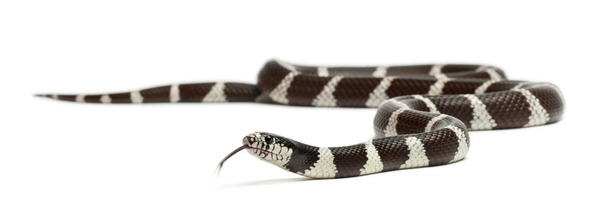
California kingsnakes are medium-sized snakes that typically reach lengths of 3 to 4 feet, though some individuals can grow up to 6 feet long. They are easily recognizable due to their bold patterns, which can include black and white or black and yellow bands. Some morphs exhibit solid colors or different patterns, making them even more appealing to reptile enthusiasts.
California kingsnakes are native to the western United States, primarily found in California, but their range extends into parts of Nevada, Arizona, and Mexico. They inhabit a variety of environments, including grasslands, woodlands, and rocky areas. Kingsnakes are primarily terrestrial but are also known to climb when necessary.
California kingsnakes are generally known for their docile and easygoing nature. They are often calm when handled, making them suitable for both beginners and experienced snake owners. However, like all snakes, they may bite if they feel threatened, especially when young. California kingsnakes are also known for their intelligence and curiosity, often exploring their surroundings.
Enclosure Size: A 20-gallon tank is suitable for a young California kingsnake, while adults require at least a 40-gallon tank. The enclosure should have a secure lid to prevent escapes.
Substrate: Use aspen shavings, cypress mulch, or reptile carpet as bedding. Avoid cedar and pine, as these can be harmful to snakes.
Hiding Spots: Provide hiding places using commercial hides, logs, or plants. This helps reduce stress and provides a sense of security.
Temperature Gradient: California kingsnakes require a temperature gradient within their enclosure. The warm side should be maintained at 80-85°F (about 27-29°C), while the cool side should be around 70-75°F (about 21-24°C).
Heating Elements: Use an under-tank heater or heat lamp to create the temperature gradient. Ensure there are no direct heat sources that could cause burns.
Humidity: Maintain humidity levels around 30-50%. A small water dish should be provided for drinking, and it can also help with humidity.
California kingsnakes do not require special lighting, but a regular light cycle of 12 hours of light and 12 hours of darkness is beneficial. This mimics their natural environment and helps regulate their biological clock.
California kingsnakes are carnivorous and primarily feed on small mammals, birds, and reptiles. Here are some feeding guidelines:
Diet: Offer appropriately sized prey, such as mice or small rats, depending on the size of the snake. The prey should be about the width of the snake’s body.
Feeding Schedule: Hatchlings should be fed every 5-7 days, while adults can be fed every 7-14 days. Monitor your snake’s weight to determine the right feeding schedule.
Frozen vs. Live: Many owners prefer to feed frozen-thawed prey to reduce the risk of injury to the snake and to avoid ethical concerns with feeding live prey.
Handling California kingsnakes is important for socialization and bonding. Here are some tips:
Frequency: Handle your California kingsnake regularly, but avoid handling right after feeding, as this can stress the snake.
Gentle Approach: Always approach the snake calmly and support its body to prevent stress. Allow the snake to explore your hands and surroundings.
Regular health checks are crucial for your California kingsnake. Look for signs of illness, such as:
Mites or Parasites: Regularly inspect for pests, especially if the snake is scratching or rubbing against surfaces.
Respiratory Issues: Symptoms may include wheezing, labored breathing, or discharge from the nose.
Shedding Problems: If your snake has difficulty shedding, it may require increased humidity or assistance.
California kingsnakes are attractive, manageable pets that can provide a rewarding experience for both beginners and experienced keepers. Their striking appearance, gentle temperament, and relatively straightforward care requirements make them a popular choice among reptile enthusiasts. By providing a proper habitat, balanced diet, and regular handling, you can ensure your California kingsnake lives a long, healthy life. Whether you are drawn to their beautiful colors or their easygoing nature, a California kingsnake can be an excellent addition to your home.
Milk snakes (Lampropeltis triangulum) are colorful and popular pet snakes, well-known for their striking patterns and relatively easy care. This guide will cover essential information about milk snakes, including their characteristics, natural habitat, care requirements, feeding habits, and behavior.
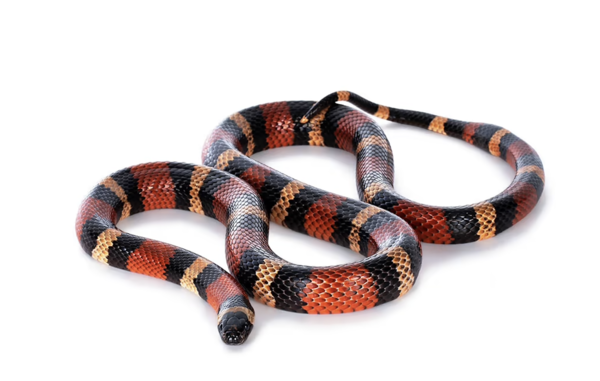
Milk snakes are medium-sized snakes that can range from 2 to 4 feet in length, although some individuals can grow up to 6 feet. They have a slender body with a distinctive color pattern that typically features bright red, black, and yellow or white bands. This coloration can vary depending on the subspecies, making them visually appealing to snake enthusiasts.
Milk snakes are native to North America, with a range that extends from southern Canada to Mexico. They can be found in various habitats, including grasslands, forests, rocky hillsides, and agricultural areas. Milk snakes are primarily terrestrial but are also capable climbers.
Milk snakes are known for their calm and docile nature, making them suitable for beginners. They are generally easy to handle and often adapt well to captivity. However, like all snakes, they may bite if threatened or stressed. Milk snakes are also known for their curiosity and intelligence, often exploring their surroundings.
Enclosure Size: A 20-gallon tank is suitable for juvenile milk snakes, while adults should have at least a 40-gallon tank. The enclosure should have a secure lid to prevent escapes.
Substrate: Use aspen shavings, cypress mulch, or reptile carpet as bedding. Avoid cedar and pine, as these can be harmful to snakes.
Hiding Spots: Provide hiding places with commercial hides, logs, or plants to reduce stress and give the snake a sense of security.
Temperature Gradient: Milk snakes require a temperature gradient in their enclosure. The warm side should be maintained at 80-85°F (about 27-29°C), while the cool side should be around 70-75°F (about 21-24°C).
Heating Elements: Use an under-tank heater or heat lamp to create the temperature gradient. Make sure there are no direct heat sources that could cause burns.
Humidity: Maintain humidity levels around 30-50%. Provide a shallow water dish for drinking and soaking.
Milk snakes do not require special lighting, but providing a regular light cycle of 12 hours of light and 12 hours of darkness can help mimic their natural environment and regulate their biological clock.
Milk snakes are carnivorous and primarily feed on small mammals, birds, and reptiles. Here are some feeding guidelines:
Diet: Offer appropriately sized prey, such as mice or small rats, depending on the size of the snake. Prey should be about the width of the snake's body.
Feeding Schedule: Juvenile milk snakes should be fed every 5-7 days, while adults can be fed every 7-14 days. Monitor the snake's weight to determine the appropriate feeding schedule.
Frozen vs. Live: Many owners prefer to feed frozen-thawed prey to reduce the risk of injury and avoid ethical concerns associated with live feeding.
Regular handling is essential for socialization and bonding with your milk snake. Here are some tips:
Frequency: Handle your milk snake regularly, but avoid handling immediately after feeding, as this can stress the snake.
Gentle Approach: Always approach the snake calmly and support its body to prevent stress. Allow the snake to explore your hands and surroundings.
Regular health checks are vital for your milk snake. Look for signs of illness, such as:
Mites or Parasites: Regularly inspect for pests, especially if the snake shows signs of scratching or rubbing against surfaces.
Respiratory Issues: Symptoms may include wheezing, labored breathing, or nasal discharge.
Shedding Problems: If your snake has difficulty shedding, it may require increased humidity or assistance.
Milk snakes are beautiful and manageable pets that can provide an enjoyable experience for both beginners and experienced keepers. Their striking colors, gentle demeanor, and straightforward care requirements make them a popular choice among reptile enthusiasts. By providing a suitable habitat, balanced diet, and regular handling, you can ensure that your milk snake lives a long and healthy life. Whether you are drawn to their vibrant appearance or their easygoing nature, a milk snake can be a wonderful addition to your home.
The rosy boa (Lichanura trivirgata) is a captivating snake known for its striking coloration and gentle demeanor. This guide will explore the characteristics, natural habitat, care requirements, feeding habits, and behavior of the rosy boa, making it an ideal choice for both beginners and experienced reptile enthusiasts.
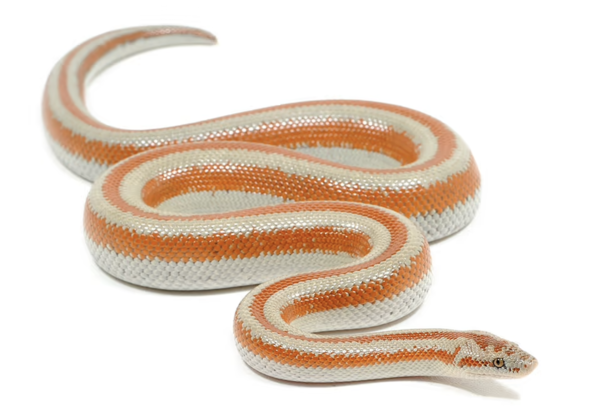
Rosy boas are medium-sized snakes that typically reach lengths of 2 to 3 feet, with some individuals growing up to 4 feet. They have a stout body with a smooth, shiny appearance. The coloration varies widely but commonly features a base of light pink or tan, adorned with darker brown or reddish stripes running along their body. This beautiful patterning allows them to blend seamlessly into their natural desert environment.
Rosy boas are native to the arid regions of the southwestern United States and northern Mexico, including California, Arizona, Nevada, and parts of Baja California. They prefer habitats such as deserts, rocky hillsides, and scrublands, where they can easily find shelter and warmth. These snakes are primarily terrestrial but can also climb and hide in crevices or under rocks.
Rosy boas are known for their calm and docile nature, making them excellent pets. They are generally tolerant of handling and can become quite friendly with regular interaction. Despite their gentle temperament, they may become defensive if threatened, but they are less prone to bite compared to more aggressive snake species. Rosy boas are also curious and will often explore their surroundings.
Enclosure Size: A 20-gallon tank is suitable for juvenile rosy boas, while adults require a 40-gallon tank or larger. The enclosure should have a secure lid to prevent escapes.
Substrate: Use aspen shavings, coconut fiber, or paper towels as bedding. Avoid cedar and pine, as these can be harmful to snakes.
Hiding Spots: Provide multiple hiding spots using commercial hides, logs, or plants. This helps reduce stress and gives the snake a sense of security.
Temperature Gradient: Rosy boas require a temperature gradient within their enclosure. The warm side should be maintained at 85-90°F (about 29-32°C), while the cool side should be around 70-75°F (about 21-24°C).
Heating Elements: Use an under-tank heater or heat lamp to create the temperature gradient. Ensure there are no direct heat sources that could cause burns.
Humidity: Maintain humidity levels around 30-50%. A shallow water dish should be provided for drinking, and occasional misting can help maintain humidity.
Rosy boas do not require special lighting, but providing a regular light cycle of 12 hours of light and 12 hours of darkness can help mimic their natural environment and regulate their biological clock.
Rosy boas are carnivorous and primarily feed on small mammals, such as mice and rats. Here are some feeding guidelines:
Diet: Offer appropriately sized prey based on the snake's size. Prey should be about the width of the snake's body.
Feeding Schedule: Juvenile rosy boas should be fed every 5-7 days, while adults can be fed every 7-14 days. Monitor the snake's weight to determine the appropriate feeding frequency.
Frozen vs. Live: Many owners prefer to feed frozen-thawed prey to reduce the risk of injury to the snake and to avoid ethical concerns associated with live feeding.
Regular handling is essential for socialization and bonding with your rosy boa. Here are some tips:
Frequency: Handle your rosy boa regularly, but avoid handling right after feeding, as this can stress the snake.
Gentle Approach: Always approach the snake calmly and support its body to prevent stress. Allow the snake to explore your hands and surroundings.
Regular health checks are vital for your rosy boa. Look for signs of illness, such as:
Mites or Parasites: Regularly inspect for pests, especially if the snake shows signs of scratching or rubbing against surfaces.
Respiratory Issues: Symptoms may include wheezing, labored breathing, or nasal discharge.
Shedding Problems: If your snake has difficulty shedding, it may require increased humidity or assistance.
The rosy boa is a beautiful and manageable pet that can provide a rewarding experience for both beginners and experienced keepers. With its stunning coloration, gentle temperament, and relatively straightforward care requirements, the rosy boa is a popular choice among reptile enthusiasts. By providing a suitable habitat, balanced diet, and regular handling, you can ensure your rosy boa lives a long and healthy life. Whether you are drawn to their striking appearance or their calm nature, a rosy boa can be an excellent addition to your home.
Caring for a small snake involves several key components:
Enclosure: A glass tank or plastic terrarium is ideal. The size depends on the species, but generally, a 20-gallon tank is sufficient for most small snakes.
Substrate: Use materials like aspen shavings or paper towels. Avoid cedar or pine, as they can be harmful.
Hiding Spots: Provide hiding spots using logs, caves, or commercial hides to help your snake feel secure.
Heating: Use an under-tank heater or heat lamp to create a temperature gradient, with a warm side (around 80-85°F) and a cool side (around 70-75°F).
Humidity: Research the specific humidity needs for your snake species. Generally, maintaining a humidity level of 30-50% is ideal.
Feeding Schedule: Most small snakes eat once every 1 to 2 weeks, depending on their size and age. Prey should be appropriately sized—about the width of the snake’s body.
Live vs. Frozen: Many owners prefer feeding frozen-thawed prey to avoid the ethical issues of feeding live animals.
Frequency: Handle your snake gently and regularly to help it become accustomed to you. Avoid handling right after feeding, as this can stress them.
Signs of Stress: Be aware of signs of stress, such as rapid movement or hiding, and give your snake time to adjust to its new environment.
When selecting a small snake as a pet, consider the following:
Experience Level: Some species are more forgiving for beginners than others. Corn snakes and hognose snakes are often recommended for first-time snake owners.
Space and Environment: Ensure you have the right space and resources to provide a suitable habitat.
Long-term Commitment: Snakes can live for many years—some even into their twenties. Be prepared for the long-term care of your pet.
Small snakes can be excellent pets, offering a unique experience for reptile enthusiasts and beginners alike. With proper care, attention, and love, these fascinating creatures can thrive in your home. Always do thorough research on the specific species you’re interested in, and consult with a vet specializing in reptiles to ensure a healthy and happy pet. Whether you choose a corn snake, hognose, or any other small snake, you’ll be rewarded with a captivating companion!
animal tags: snakes
We created this article in conjunction with AI technology, then made sure it was fact-checked and edited by a Animals Top editor.